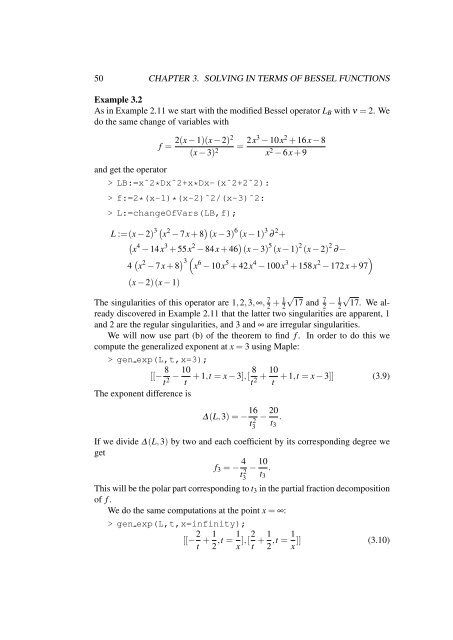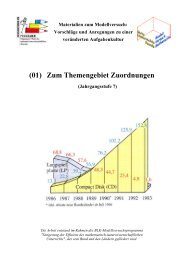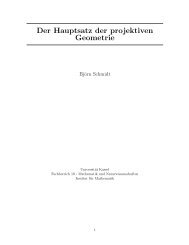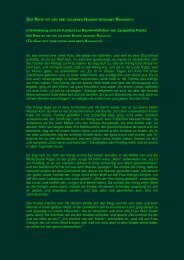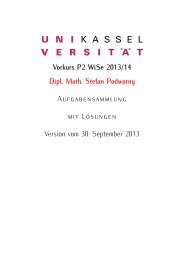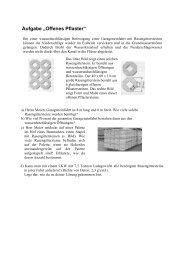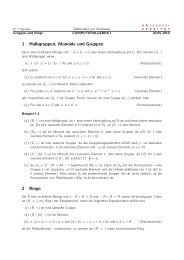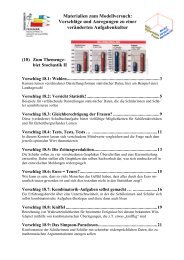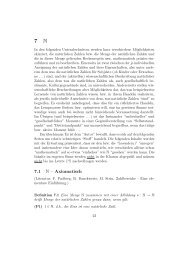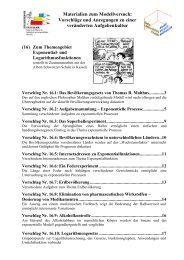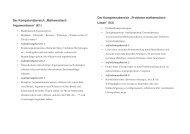Solving Differential Equations in Terms of Bessel Functions
Solving Differential Equations in Terms of Bessel Functions
Solving Differential Equations in Terms of Bessel Functions
Create successful ePaper yourself
Turn your PDF publications into a flip-book with our unique Google optimized e-Paper software.
50 CHAPTER 3. SOLVING IN TERMS OF BESSEL FUNCTIONS<br />
Example 3.2<br />
As <strong>in</strong> Example 2.11 we start with the modified <strong>Bessel</strong> operator LB with ν = 2. We<br />
do the same change <strong>of</strong> variables with<br />
f =<br />
2(x − 1)(x − 2)2<br />
(x − 3) 2<br />
and get the operator<br />
> LB:=xˆ2*Dxˆ2+x*Dx-(xˆ2+2ˆ2):<br />
> f:=2*(x-1)*(x-2)ˆ2/(x-3)ˆ2:<br />
> L:=changeOfVars(LB,f);<br />
= 2x3 − 10x 2 + 16x − 8<br />
x 2 − 6x + 9<br />
L :=(x − 2) 3 x 2 − 7x + 8 (x − 3) 6 (x − 1) 3 ∂ 2 +<br />
4 3 2 5 2 2<br />
x − 14x + 55x − 84x + 46 (x − 3) (x − 1) (x − 2) ∂−<br />
4 x 2 3<br />
<br />
− 7x + 8 x 6 − 10x 5 + 42x 4 − 100x 3 + 158x 2 <br />
− 172x + 97<br />
(x − 2)(x − 1)<br />
The s<strong>in</strong>gularities <strong>of</strong> this operator are 1,2,3,∞, 7 2 + 1 √<br />
7<br />
2 17 and 2 − 1 √<br />
2 17. We already<br />
discovered <strong>in</strong> Example 2.11 that the latter two s<strong>in</strong>gularities are apparent, 1<br />
and 2 are the regular s<strong>in</strong>gularities, and 3 and ∞ are irregular s<strong>in</strong>gularities.<br />
We will now use part (b) <strong>of</strong> the theorem to f<strong>in</strong>d f . In order to do this we<br />
compute the generalized exponent at x = 3 us<strong>in</strong>g Maple:<br />
> gen exp(L,t,x=3);<br />
[[− 8 10<br />
8 10<br />
− + 1,t = x − 3],[ + + 1,t = x − 3]] (3.9)<br />
t2 t t2 t<br />
The exponent difference is<br />
∆(L,3) = − 16<br />
t 2 3<br />
− 20<br />
.<br />
t3<br />
If we divide ∆(L,3) by two and each coefficient by its correspond<strong>in</strong>g degree we<br />
get<br />
f3 = − 4<br />
t 2 3<br />
− 10<br />
.<br />
t3<br />
This will be the polar part correspond<strong>in</strong>g to t3 <strong>in</strong> the partial fraction decomposition<br />
<strong>of</strong> f .<br />
We do the same computations at the po<strong>in</strong>t x = ∞:<br />
> gen exp(L,t,x=<strong>in</strong>f<strong>in</strong>ity);<br />
[[− 2<br />
t<br />
1 1<br />
+ ,t =<br />
2 x ],[2<br />
t<br />
+ 1<br />
2<br />
1<br />
,t = ]] (3.10)<br />
x


